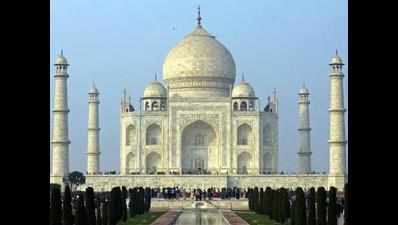Trending
This story is from October 18, 2016
ASI initiates study to find effects of air pollutants on the Taj
The Archaeological Survey of India’s (ASI) has initiated a fresh study to find out the effects of air pollution on the Taj Mahal. The focus of the study will be on the movement of the wind and on the concentration of particulate matter (PM) on the 17th century monument.

Representative image
Aditya.dev@timesgroup.com
Agra: The Archaeological Survey of India’s (ASI) has initiated a fresh study to find out the effects of air pollution on the Taj Mahal. The focus of the study will be on the movement of the wind and on the concentration of particulate matter (PM) on the 17th century monument.
A recent study, conducted by researchers from Georgia Institute of Technology, University of Minnesota and Duke University, US with IIT Kanpur, has discovered that open burning of garbage causes 10 times more pollutant deposits on the Taj than the recently-banned burning of cowdung cakes.Both sources of pollution, the study also found, cause at least 713 premature deaths in the city every year, besides posing serious health hazards to visitors to the popular tourist destination.
A senior ASI official said, “There is no doubt that the Taj is facing serious threat from pollution, but so far we have not been able to pin point the exact sources. From burning of garbage and cowdung cakes to emissions from Firozabad glass industry and vehicles have been blamed for yellowing of the white marbles of the world heritage site. Our study will solely focus on finding the sources, rather than blaming anything and everything.”
The official added that it would study the wind movement around the Taj during the last two-years. It would try to ascertain at the pattern day-wise, month-wise and season-wise. In the next step, it would try to find out major pollutants which are getting deposited on the monument from those directions which are towards the monument. Finally, it would try and locate the sources which are producing those pollutants.
The archaeological department plans to submit the final report to the Supreme Court and other departments concerned for concrete actions to be taken to minimize harm to the Taj, the official added.
Two Indo-US studies have been conducted in the past four years to find out the major sources of pollutants responsible for giving yellow tinge to the monument.
In 2014, an Indo-US study on Taj had revealed that brown and black carbons along with dust are responsible for giving yellow tinge to the monument. However, it has underestimated the municipal solid waste burning and dung cake impacts on the monument.
The study had revealed that biomass burning, which included MSW emissions and cow dung cake burning, accounted for nearly 40% of organic matter —a component of the particulate matter — deposition to Taj’s surface. Dung cake burning, used extensively for cooking in the region, was the suggested culprit by the study and subsequently banned within the city limits in early 2015.
The second study, which was recently got published in an international journal stated that the impact of municipal solid waste burning on the Taj Mahal is 10 times more than the cow dung cake burning as far as particulate matter – PM 2.5 is concerned.
End of Article
FOLLOW US ON SOCIAL MEDIA










